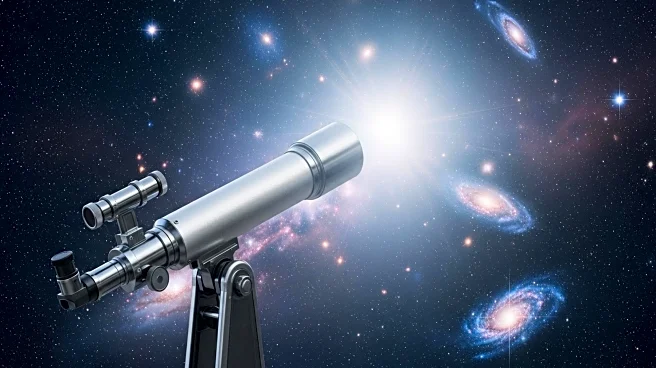What is the story about?
What's Happening?
A team of international astronomers, including researchers from the University of Michigan and Michigan State University, have discovered a new interstellar object named 3I/ATLAS. This marks the third known interstellar object to visit our solar system. Interstellar objects originate outside our solar system and pass through without entering a stable orbit around the sun. The discovery was facilitated by NASA's Asteroid Terrestrial-impact Last Alert System (ATLAS), which uses telescopes in Hawaii, Chile, and South Africa to scan the sky for moving objects. 3I/ATLAS is believed to be a comet, surrounded by a coma—a cloud of gas and dust. As it approaches the sun, the coma may evolve, revealing more about its composition. Initial observations suggest that 3I/ATLAS is faster, larger, and older than its predecessors, 1I/'Oumuamua and 2I/Borisov.
Why It's Important?
The discovery of 3I/ATLAS provides a rare opportunity for astronomers to study interstellar objects, which can offer insights into distant parts of our galaxy. Understanding the composition and behavior of such objects can enhance knowledge about the formation and evolution of stars, planets, and other celestial bodies. The Vera C. Rubin Observatory, supported by the U.S. National Science Foundation and the U.S. Department of Energy, is expected to find more interstellar objects, potentially increasing the sample size for study. This could lead to significant advancements in astrophysics and a deeper understanding of the universe's history.
What's Next?
Over the coming months, space telescopes like Hubble and the James Webb Space Telescope will focus on 3I/ATLAS to gather more data on its size, spin, and reaction to solar heat. Researchers aim to detect specific gas emissions to confirm the presence and type of ices within the object. As more interstellar objects are discovered, astronomers hope to build a comprehensive sample that will allow for more detailed studies and potentially groundbreaking discoveries about the galaxy's formation.
AI Generated Content
Do you find this article useful?














